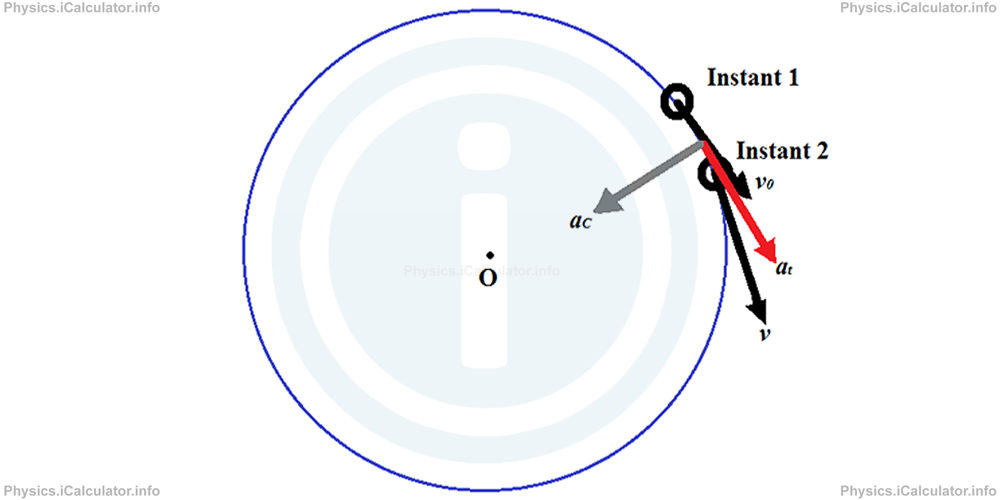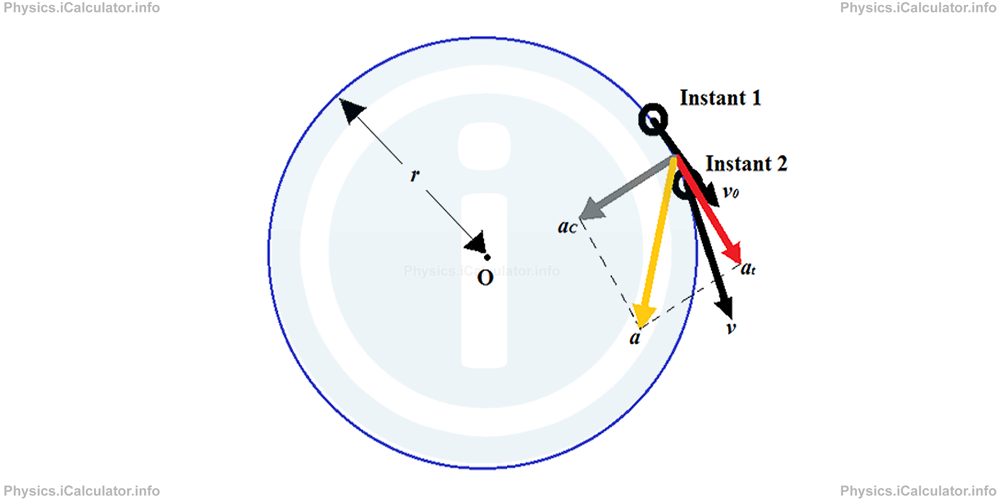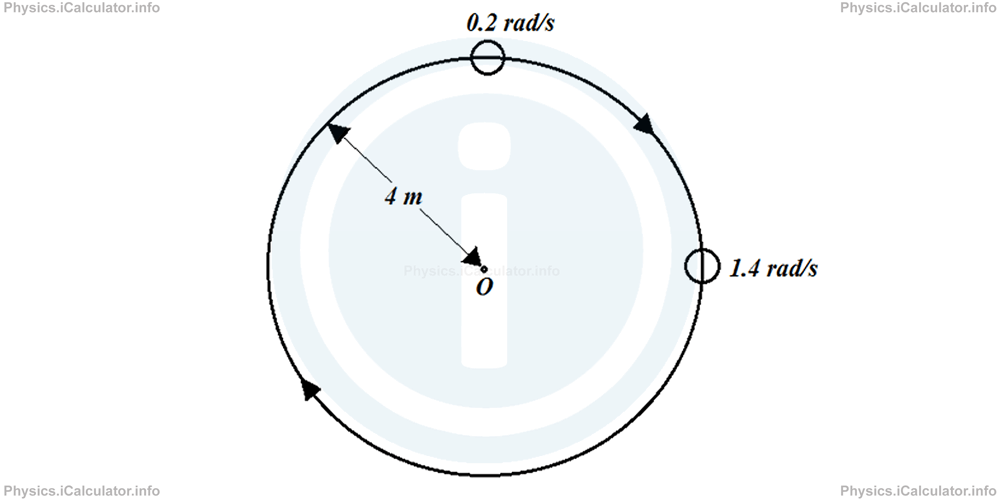Menu
Physics Lesson 7.3.3 - Total Acceleration during a non-Uniform Rotational Motion
Please provide a rating, it takes seconds and helps us to keep this resource free for all to use
Welcome to our Physics lesson on Total Acceleration during a non-Uniform Rotational Motion, this is the third lesson of our suite of physics lessons covering the topic of Centripetal Force, you can find links to the other lessons within this tutorial and access additional physics learning resources below this lesson.
Total Acceleration during a non-Uniform Rotational Motion
As discussed in this tutorial and in tutorial "Kinematics of Rotational Motion", when an object is rotating uniformly around a fixed point, the only acceleration present in the system is the centripetal acceleration, aC. However, when the object's speed increases or decreases during rotation, there also exists another acceleration due to speeding up or slowing down - the standard acceleration we have discussed in Section 4: Dynamics. Since the direction of this acceleration complies with the direction of velocity (it is a kind of instantaneous acceleration whose direction is collinear with the vector of instantaneous velocity), we call it "tangential acceleration, at" and it is perpendicular to the centripetal acceleration as shown in the figure below.

The positions in the above figure are taken a bit distant from each other for visual purpose. This bring a higher degree of inaccuracy in our approach as we don't want the velocity vectors have different direction. It is obvious that the smaller the time interval, the closer the velocity vectors are. As a result, their direction will fit more and more. Here, we have taken a kind of intermediate direction for the tangential acceleration vector but it is obvious that when the time interval is very small, the direction of all three vectors: initial velocity vector, final velocity vector and tangential acceleration vector will be the same. This direction will be perpendicular to that of centripetal acceleration vector.
We have explained in the tutorial "The Meaning of Acceleration. Constant and Non-Constant Acceleration. Gravitational Acceleration" that acceleration caused by the change in the magnitude of velocity (here the tangential acceleration at) is calculated by the equation
where v and v0 are the magnitudes of final and initial velocities respectively and Δt is the time interval this process occurs.
On the other hand, we have the centripetal (radial) acceleration whose formula is
where the velocity v in fact is a kind of average velocity if the time interval is not very small; it is not meant to be the magnitude of final velocity as in the case of tangential acceleration. Therefore, we will write the above formula as
where usually we have
As a result, since aC and at are perpendicular, we can use the Pythagorean Theorem to calculate the magnitude of the total acceleration a in a non-uniform rotational motion:
The direction of total acceleration is obtained by applying the parallelogram rule for the addition of vectors as shown in the figure:

Example 3
An object rotating around a circular path of radius equal to 4 m increases its angular velocity from 0.2 rad/s to 1.4 rad/s in 12 s as shown in the figure.

Calculate the magnitude of total acceleration experienced by the object at the end of this process.
Solution 3
First, let's work out the initial and final (tangential) velocities of the object. Thus, from the linear-to-rotational quantities relationship we have
Therefore, for the magnitude of the initial velocity v0, we obtain
= 0.2rad/s × 4 m
= 0.8 m/s
and for that of final velocity v, we obtain
= 1.4rad/s × 4 m
= 5.6 m/s
Thus, for the tangential acceleration at we obtain
= 5.6 m/s - 0.8 m/s/12 s
= 0.4 m/s2
As for the centripetal acceleration, since we are interested what happens at the end of process, we consider only the value of final velocity in the formula. Thus, we have
= 5.62/4
= 7.84 m/s2
Hence, the magnitude of total acceleration at the end of process is
= √0.42 + 7.842
= 7.85 m/s2
You have reached the end of Physics lesson 7.3.3 Total Acceleration during a non-Uniform Rotational Motion. There are 3 lessons in this physics tutorial covering Centripetal Force, you can access all the lessons from this tutorial below.
More Centripetal Force Lessons and Learning Resources
Whats next?
Enjoy the "Total Acceleration during a non-Uniform Rotational Motion" physics lesson? People who liked the "Centripetal Force lesson found the following resources useful:
- Acceleration Feedback. Helps other - Leave a rating for this acceleration (see below)
- Rotation Physics tutorial: Centripetal Force. Read the Centripetal Force physics tutorial and build your physics knowledge of Rotation
- Rotation Revision Notes: Centripetal Force. Print the notes so you can revise the key points covered in the physics tutorial for Centripetal Force
- Rotation Practice Questions: Centripetal Force. Test and improve your knowledge of Centripetal Force with example questins and answers
- Check your calculations for Rotation questions with our excellent Rotation calculators which contain full equations and calculations clearly displayed line by line. See the Rotation Calculators by iCalculator™ below.
- Continuing learning rotation - read our next physics tutorial: Kinematics of Rotational Motion
Help others Learning Physics just like you
Please provide a rating, it takes seconds and helps us to keep this resource free for all to use
We hope you found this Physics lesson "Centripetal Force" useful. If you did it would be great if you could spare the time to rate this physics lesson (simply click on the number of stars that match your assessment of this physics learning aide) and/or share on social media, this helps us identify popular tutorials and calculators and expand our free learning resources to support our users around the world have free access to expand their knowledge of physics and other disciplines.